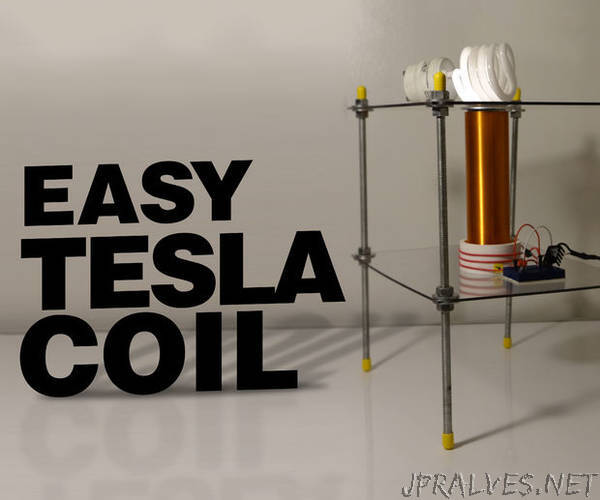
“Wireless electricity is here! From wirelessly powered lighting to wireless chargers and even wireless smart homes, wireless transmission of power is an emerging technology with innumerable applications.
A light bulb powered with no wires? A cell phone charger that doesn’t need to be plugged in? A home with no plugs, no wires and everything just ‘works’? It’s not magic, it’s no mystery, it’s science!
The invention of wireless power transmission is typically attributed to 20th century inventor Nikola Tesla, though the technology may have been in use much earlier. Since then, however, improved designs and modern components make this an easy DIY project anyone can do with just a few simple parts!
Let’s get started!
FUN FACT: A Tesla Coil can even create mini lightning bolts that spark from the surface!
CAUTION: Do not use near persons with pacemakers, sensitive electronics or flammable materials.
Electricity needs to travel through wires, right? Well, not anymore!
This simple device shows how electricity can be transmitted wirelessly to power all types of electrical devices for convenience, necessity or just plain awesomeness!
Here’s how it works. We are creating a system that converts a low voltage to a high voltage and simultaneously turns itself on and off very quickly. That’s all it takes to transmit wireless electricity. A few volts of electricity are passed to one side of a coil of wire and to a grounded capacitor connected to the negative side of the power supply. The other side of the coil is connected to the collector of a transistor, a device that can turn off the flow of current based on an input signal, and then to ground as well. This causes two things to happen. The capacitor begins to charge while the coil (based on this) begins to radiate an electromagnetic field. This coil is then placed around a second coil with many more windings of a smaller gauge wire which creates a transformer, converting a low input voltage to a very high voltage in the second coil. This secondary coil is then connected to both a resistor connected to the power source and the base of the transistor which then shuts off the flow of current to the first primary coil.
This circuit configuration creates a feedback loop which automatically turns on and off the secondary coil hundreds of times per second which creates a high voltage, high frequency electric field capable of transmitting wireless electricity!
Simple enough, right?
FUN FACT: A transistor is what makes the processors in computers work, so, in essence, we are building a super simple computer to control our Tesla Coil!”
